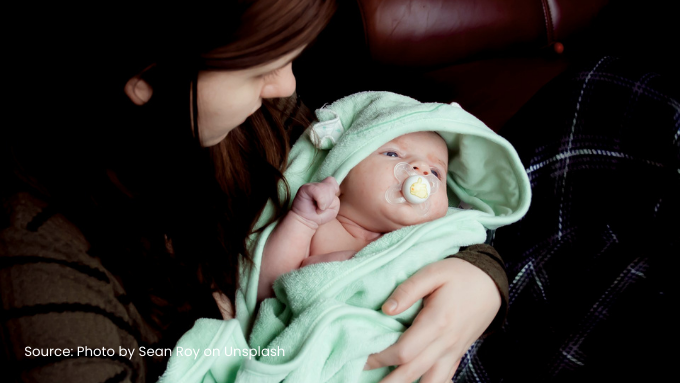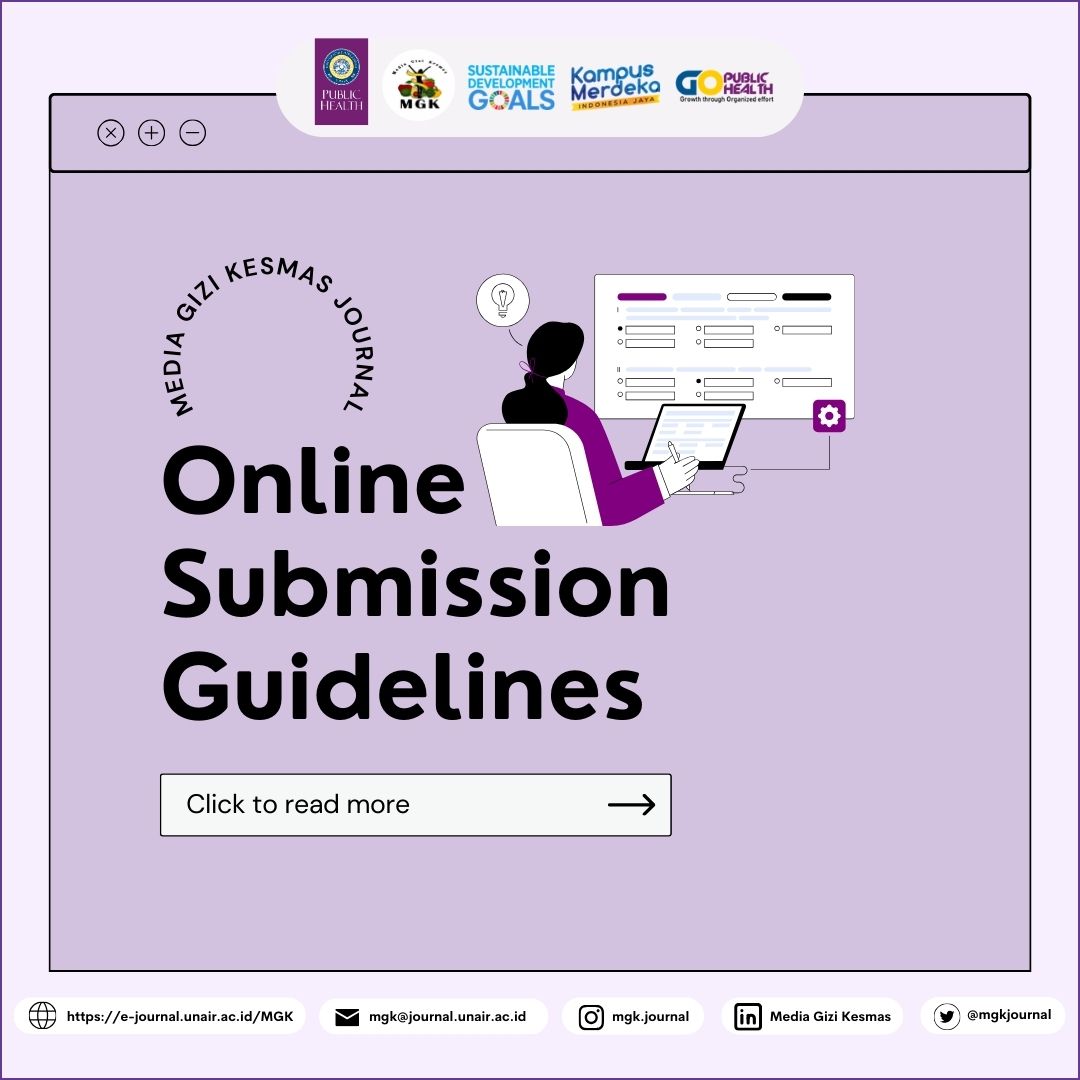Effects of COVID-19 Pandemic on Maternal Healthcare Utilization in Ngawi Regency: A Time-Series Study

Downloads
Background: The COVID-19 pandemic situation has had a serious impact on the maternal group (pregnancy, childbirth and postpartum women) in Indonesia. During 2021, the maternal mortality rate in Ngawi Regency will reach 276.9 per 100,000 live births after previously it was only 84.4 per 100,000 live births. The COVID-19 pandemic has become an directly and indirectly obstacle for mothers in accessing maternal health services.
Objectives: This study aims to see whether there is an impact of the COVID-19 pandemic on differences in utilization of maternal health services in Ngawi District during May 2019 – April 2021.
Methods: A quantitative-descriptive time-series research method was performed using data from Local Area Monitoring Reports-Maternal and Child Health in Ngawi Regency during 2019-2021. The data were analyzed univariately and using an independent t-test to check if there were any differences in the number of mothers who accessed health services before and during the pandemic.
Results: There was a downward trend in the number of mothers receiving health services for each type of maternal health service in Ngawi District during May 2020 – April 2021. All types of maternal health services experienced an average decrease in the number of mothers receiving health services during the pandemic. Three of five maternal health services in this study which showed significant differences in the average number of mothers utilizing health services during the pandemic were antenatal care K4 (p = 0.001), healthcare deliveries (p = 0.045), and postpartum services (p = 0.031). Antenatal care K1 (p = 0.206) and management of obstetric complications (p = 0.131) did not show any significant differences statistically.
Conclusions: Antenatal care K4, healthcare deliveries, and postpartum services experienced significant differences in the average number of mothers who utilized maternal health services before and during pandemic. The Regional Health Office, in collaboration with all healthcare providers, should develop a specific plans and strategies to facilitate better health care for those three maternal health services, particularly in pandemic situation..
Aye, Y.M. et al. (2022) ‘Utilization of Postnatal Care Services among Thai Women during the COVID-19 Pandemic: Results of a Web-Based Survey', International Journal of Environmental Research and Public Health, 19(11), p. 6536. Available at: https://doi.org/10.3390/ijerph19116536.
Bekele, C. et al. (2022) ‘Impact of the COVID-19 pandemic on utilisation of facility-based essential maternal and child health services from March to August 2020 compared with pre-pandemic March–August 2019: a mixed-methods study in North Shewa Zone, Ethiopia', BMJ Open, 12(6), p. e059408. Available at: https://doi.org/10.1136/bmjopen-2021-059408.
Dinas Kesehatan Provinsi Jawa Timur (2022) Profil Kesehatan Jawa Timur Tahun 2021. Surabaya.
Fitrianingrum, N.M., Sabarinah, S. and Pratomo, H. (2021) ‘Health Impact Assessment of Covid-19 Towards Maternal Health Care in West Jakarta', Journal of Maternal and Child Health, 6(2), pp. 229–237. Available at: https://doi.org/10.26911/thejmch.-2021.06.02.10.
Goyal, M. et al. (2021) ‘The effect of the COVID"19 pandemic on maternal health due to delay in seeking health care: Experience from a tertiary center', International Journal of Gynecology & Obstetrics, 152(2), pp. 231–235. Available at: https://doi.org/10.1002/ijgo.13457.
Herawati, H. and Sudiarti, T. (2022) ‘Dampak Pandemi Covid-19 terhadap Tren Pelayanan KIA di Kabupaten Tangerang Tahun 2020', NERSMID : Jurnal Keperawatan dan Kebidanan, 5(1), pp. 88–100. Available at: https://doi.org/10.55173/nersmid.v5i1.93.
Kassie, A., Wale, A. and Yismaw, W. (2021) ‘Impact of Coronavirus Diseases-2019 (COVID-19) on Utilization and Outcome of Reproductive, Maternal, and Newborn Health Services at Governmental Health Facilities in South West Ethiopia, 2020: Comparative Cross-Sectional Study', International Journal of Women's Health, Volume 13, pp. 479–488. Available at: https://doi.org/10.2147/IJWH.S309096.
Kementerian Kesehatan Republik Indonesia (2020) Pedoman Pelayanan Antenatal, Persalinan, Nifas, dan Bayi Baru Lahir di Era Adaptasi Kebiasaan Baru. 2nd edn. Jakarta: Kementerian Kesehatan RI. Available at: https://covid19.go.id/storage/app/media/Materi%20Edukasi/2020/Oktober/revisi-2-a5-pedoman-pelayanan-antenatal-persalinan-nifas-dan-bbl-di-era-adaptasi-kebiasaan-baru.pdf (Accessed: 8 July 2023).
Kementerian Kesehatan Republik Indonesia (2022) Profil Kesehatan Indonesia 2021. Jakarta.
Khotimah Elfiyani, N. et al. (2022) ‘Dampak dan Strategi Layanan Kesehatan Ibu Hamil Selama Pandemi COVID-19', Jurnal Kesehatan Reproduksi, 9(2), pp. 119–127. Available at: https://doi.org/10.22146/jkr.66345.
Landrian, A. et al. (2022) ‘Effects of the COVID-19 pandemic on antenatal care utilisation in Kenya: A cross-sectional study', BMJ Open, 12(4). Available at: https://doi.org/10.1136/bmjopen-2021-060185.
Maisaroh, M. (2021) Kajian Dampak Pelayanan Kesehatan Ibu dan Anak (KIA) di Masa Pandemi COVID-19. Diploma Thesis. Stikes Ngudia Husada Madura. Available at: http://repository.stikesnhm.ac.id/id/eprint/869/ (Accessed: 6 May 2023).
McCarthy, J. and Maine, D. (1992) ‘A framework for analyzing the determinants of maternal mortality.', Studies in family planning, 23(1), pp. 23–33. Available at: http://www.ncbi.nlm.nih.gov/pubmed/1557792.
Nurrizka, R.H., Nurdiantami, Y. and Makkiyah, F.A. (2021) ‘Akses Ibu Hamil terhadap Pelayanan Kesehatan di Masa Pandemi COVID-19', Jurnal Kebijakan Kesehatan Indonesia: JKKI, 10(2), pp. 94–99. Available at: https://jurnal.ugm.ac.id/jkki/article/view/62752 (Accessed: 6 July 2023).
Pant, S., Koirala, S. and Subedi, M. (2020) ‘Access to Maternal Health Services during COVID-19', Europasian Journal of Medical Sciences, 2, pp. 46–50. Available at: https://doi.org/10.46405/ejms.v2i2.110.
Pemerintah Provinsi Jawa Timur (2021) Peta Sebaran COVID-19 Jatim. Available at: https://infocovid19.jatimprov.go.id/ (Accessed: 1 July 2023).
Saccone, G. et al. (2020) ‘Psychological impact of coronavirus disease 2019 in pregnant women', American Journal of Obstetrics and Gynecology, 223(2), pp. 293–295. Available at: https://doi.org/10.1016/j.ajog.2020.05.003.
Salsa, N.R. and Dhamanti, I. (2022) ‘Akses Pelayanan Kesehatan Ibu dan Anak di Puskesmas Selama Pandemi Covid-19', Poltekita : Jurnal Ilmu Kesehatan, 15(4), pp. 433–440. Available at: https://doi.org/10.33860/jik.v15i4.878.
Satuan Tugas Penanganan COVID-19 (2021) Indonesia fights back the covid-19 second wave. Available at: https://covid19.go.id/p/berita/indonesia-fights-back-covid-19-second-wave (Accessed: 28 June 2023).
Temesgen, K. et al. (2021) ‘Maternal health care services utilization amidstCOVID-19 pandemic in West Shoa zone, central Ethiopia', PLOS ONE. Edited by F.T. Spradley, 16(3), p. e0249214. Available at: https://doi.org/10.1371/journal.pone.0249214.
Tilahun, B. et al. (2022) ‘Effect of COVID-19 Pandemic on Maternal and Child Health Services and Strategies for Effective Service Implementation in Ethiopia', Journal of Multidisciplinary Healthcare, Volume 15, pp. 2781–2795. Available at: https://doi.org/10.2147/JMDH.S390750.
Wanyana, D., Wong, R. and Hakizimana, D. (2021) ‘Rapid assessment on the utilization of maternal and child health services during COVID-19 in Rwanda', Public Health Action, 11(1), pp. 12–21. Available at: https://doi.org/10.5588/pha.20.0057.
Wei, S.Q. et al. (2021) ‘The impact of COVID-19 on pregnancy outcomes: a systematic review and meta-analysis', Canadian Medical Association Journal, 193(16), pp. E540–E548. Available at: https://doi.org/10.1503/cmaj.202604.
World Health Organization (2020) Coronavirus disease (COVID-19) pandemic. Available at: https://www.who.int/europe/emergencies/situations/covid-19#:~:text=This%20led%20WHO%20to%20declare,pandemic%20on%2011%20March%202020. (Accessed: 1 July 2023).
Copyright (c) 2024 Levi Nadilla Putri, Eny Qurniyawati

This work is licensed under a Creative Commons Attribution-ShareAlike 4.0 International License.
Media Gizi Kesmas by Unair is licensed under a Creative Commons Attribution-ShareAlike 4.0 International License.
1. The journal allows the author(s) to hold the copyright and to retain the publishing right of the article without restrictions.
2. The legal formal aspect of journal publication accessibility refers to Creative Commons Attribution-Share-Alike (CC BY-SA).
3. The Creative Commons Attribution-Share-Alike (CC BY-SA) license allows re-distribution and re-use of a licensed work on the conditions that the creator is appropriately credited and that any derivative work is made available under "the same, similar or a compatible license”. Other than the conditions mentioned above, the editorial board is not responsible for copyright violations.


















